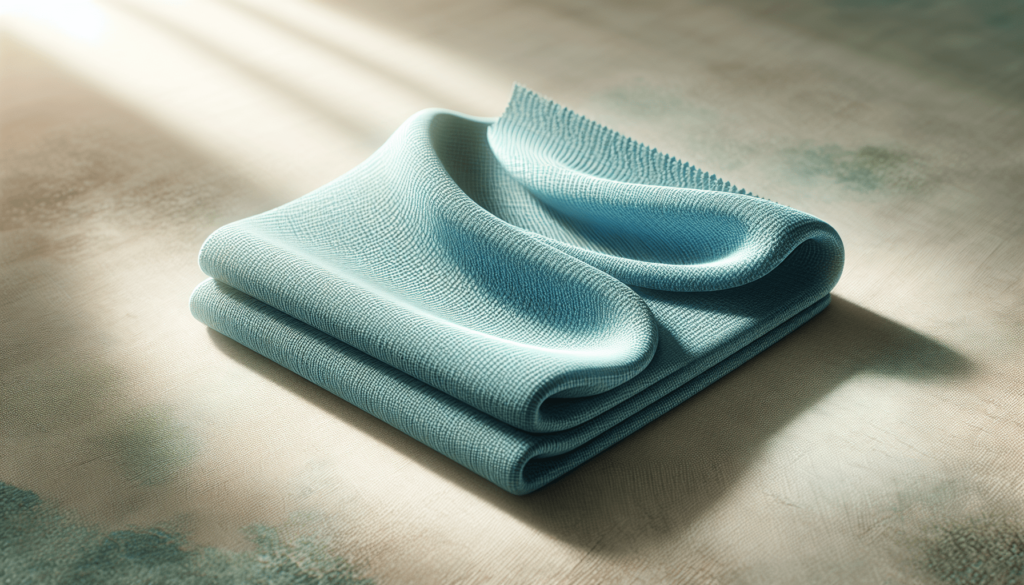Have you ever found yourself endlessly sneezing or dealing with irritating skin rashes, despite your best efforts to clean and maintain your living space? It’s possible that the fabrics around you might be part of the problem. When it comes to creating a comfortable and health-conscious environment, the fabrics you choose can play a significant role, especially if you or someone in your household suffers from allergies. But how can you be sure you’re picking the right materials? In this guide, we’ll journey through the key features to look for in allergy-resistant fabrics to help protect you from those unwanted allergen attacks.
Understanding Allergy-Resistant Fabrics
Before we zoom in on the specifics, it’s important to understand what allergy-resistant fabrics are. Essentially, these are specially designed materials that minimize the risk of allergic reactions. By incorporating unique manufacturing processes and materials, these fabrics prevent the accumulation of allergens like dust mites, pollen, mold spores, and pet dander, helping individuals with allergies breathe easier and feel more comfortable.
Why Choose Allergy-Resistant Fabrics?
You might wonder why such an emphasis is placed on allergy-resistant fabrics. Here’s the key: Allergies can significantly impact daily living. Whether it’s sneezing, itchy eyes, or skin irritation, these symptoms can severely disrupt sleep, work, and relaxation. By selecting fabrics that limit allergen exposure, you’re taking a proactive step in creating a healthier home atmosphere. This means more settled nights and days free from discomfort.
Key Features of Allergy-Resistant Fabrics
To make an informed choice, you need to know what features to look for in allergy-resistant fabrics. Understanding these key characteristics will enable you to select fabrics that not only enhance your living space’s aesthetic appeal but also cater to your health needs.
Hypoallergenic Properties
Hypoallergenic simply means that a product is less likely to cause an allergic reaction. For fabrics, this involves materials crafted to resist dust mites and other allergens. Fabrics designed to be hypoallergenic use tightly woven materials that are challenging for allergens to penetrate, making them ideal for bedding and upholstery.
Breathable Material
Breathability is crucial. Allergens can multiply in warm, humid environments, so it’s essential to choose fabrics that allow air to circulate freely. Natural fibers such as cotton and linen are renowned for their breathability, which can help reduce the build-up of moisture and heat where allergens like to thrive.
Dust Mite Resistance
The bane of many allergy sufferers, dust mites, find comfort in bedding, upholstery, and carpets. Fabrics that are resistant to dust mites are normally tightly woven to prevent these tiny creatures from embedding and reproducing within the material. Look for fabric certifications that verify they are dust mite-resistant to ensure this protection.
Moisture-Wicking Abilities
Fabrics that excel at wicking moisture can also deter allergen survival. By pulling moisture away from the skin and ensuring quick evaporation, these materials help maintain a dry and inhospitable environment for allergens. Moisture-wicking fabrics keep you cool and less sticky, adding both comfort and practical allergy defense.
Anti-Microbial Treatment
Some fabrics receive special treatment during manufacturing to prevent the growth of bacteria and mold. Such anti-microbial treatments enhance the fabric’s resistance to allergens that might thrive in your home environment. This can be particularly beneficial for areas exposed to moisture, such as bathrooms and kitchens.

Common Allergy-Resistant Fabric Types
Now that you know the features to seek, let’s discuss specific types of fabrics known for their allergy-resistant capabilities. There are various options available, each with its unique benefits.
Organic Cotton
Organic cotton is an excellent choice if you’re looking for a natural, allergy-resistant option. Unlike conventionally-grown cotton, organic cotton is cultivated without the use of harmful pesticides and chemicals, ensuring a safer choice for those with sensitive skin or environmental concerns. It’s hypoallergenic, breathable, and often woven tightly enough to guard against dust mites.
Bamboo Fabric
Bamboo fabric has been making waves due to its natural anti-microbial properties and remarkable softness. The composition of bamboo fibers repels dust mites and mildew, offering a breathable and sustainable option for people seeking allergy-resistant solutions.
Silk
Elegant and hypoallergenic, silk is known for its smooth texture and natural resistance to dust mites. Silk’s repelling qualities don’t just stop at mites; it is also resistant to mold, making it a luxurious yet practical choice for those affected by allergies.
Microfiber
If you’re looking for an affordable, synthetic option, microfiber could be your answer. It’s constructed with tightly woven fibers, reducing the opportunity for allergens to settle. Additionally, microfiber is durable, easy to clean, and offers a great hypoallergenic alternative to natural fabrics.
Polyester
While polyester is synthetic, advancements in fabric technology have improved its breathability and hypoallergenic properties. Many polyester fabrics undergo treatments to enhance their dust mite and moisture resistance, making them suitable for allergy sufferers.
Tips to Maintain Your Allergy-Resistant Fabrics
Selecting the right material is only part of the battle. Maintaining your fabrics properly will ensure they continue to serve their purpose effectively. Let’s look at some care strategies that might help you prolong the life of your allergy-resistant textiles.
Regular Washing
Regularly washing bedding, curtains, and upholstery covers is vital to maintaining their hypoallergenic properties. Use hot water settings where possible, as heat helps eliminate dust mites and other allergens that might have accumulated.
Use of Hypoallergenic Detergents
When washing your fabrics, opt for hypoallergenic detergents that lack harsh chemicals and perfumes. This minimizes the risk of skin irritation and ensures that no residual allergens cling to the material after washing.
Proper Drying Techniques
Make sure your fabrics are thoroughly dried before putting them to use again. This discourages mold and mildew formation. Sun-drying can offer a natural anti-microbial effect, but ensure the items are completely dried as incomplete drying can lead to new allergen growth.
Regular Vacuuming
For upholstery and carpets, ensure regular vacuuming with a High-efficiency Particulate Air (HEPA) filter vacuum cleaner. HEPA filters trap allergens effectively, maintaining cleaner living environments.
Avoid Fabric-Enhancing Additives
Some fabric softeners or sprays can introduce allergens and disrupt the effectiveness of your allergy-resistant fabrics. Stick to the basics to prolong your materials’ hypoallergenic properties.

Creating an Allergy-Friendly Home
Apart from selecting and maintaining allergy-resistant fabrics, aquí’s a holistic approach to creating an allergy-friendly home.
Managing Home Humidity
Keeping humidity levels in check is vital to preventing the growth of mold and encouraging dust mite activity. Invest in a good dehumidifier to maintain moderate humidity levels, ideally below 50%.
Investing in Air Quality
Consider air purifiers equipped with HEPA filters, which effectively capture airborne allergens. Ensure regular maintenance and filter replacements for continued performance.
Regular Cleaning
Regular cleaning routines, including dusting and vacuuming, can significantly reduce allergen levels in the home. Use a damp cloth to dust surfaces rather than a dry one to prevent allergens from spreading through the air.
In Conclusion
Understanding and embracing allergy-resistant fabrics can profoundly impact your quality of life if you’re prone to allergies. By choosing fabrics that feature hypoallergenic properties, breathability, and antimicrobial treatments, among other benefits, you’re actively taking steps towards a more comfortable and health-conscious living environment. Coupled with proper maintenance and an overall clean and dry home environment, you’ll find that your allergy symptoms can be substantially reduced or even eliminated. Remember, the key is to make informed choices, ensuring a healthier space for you and your loved ones.
